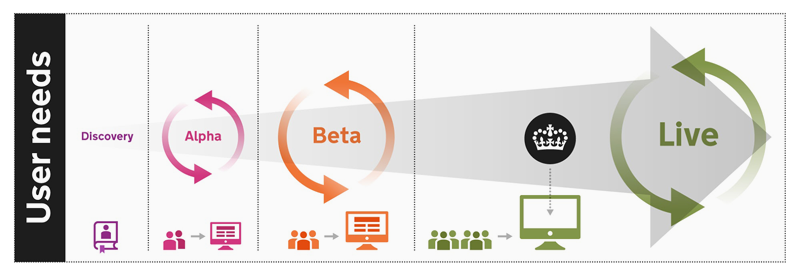Health Research Authority
Meeting the GDS Digital Service Standard
NHS Health Research Authority (HRA) champion the UK as a great place to do health research. Over time, their website had grown organically, making it difficult for users to find the information they needed.
HRA approached us to deliver a new website which had to pass the government’s strict Alpha, Beta and Live GDS service assessments, meet the NHS Style Guide, and be easy for both external and internal users to navigate.

The starting point
The HRA website held around 400 pages and over 1,000 documents. The primary users are researchers, but members of the public and NHS staff also visit the site.
Organic growth of the website didn’t take into account the way different visitors used it. The result was tricky navigation, leaving it difficult for users to find information, in turn this led to an increasing number of phone and email enquiries.
“We needed a site that would be user-friendly, but also responsive to emerging technology and trends, to reduce the need for future large-scale redevelopment. The solution Torchbox offered allowed us to do that.”
Naomi Farmer, Product Delivery Manager, HRA
Since the Department of Health fund the NHS Health Research Authority, the new site build was subject to approval from the Government Digital Services (GDS) team. We needed to deliver the project by following GDS best practice, meeting their Digital Service Standard.
How we helped
Our focus was to make HRA’s content easy to find. To do this, we knew we'd need to overhaul their information architecture (IA), change the way they tagged and labelled content and improve their search function.
We worked with the HRA team to deliver three key phases: discovery, alpha and beta. The process allowed us to work iteratively and develop clear user journeys to underpin our suggested new IA. It was important to rigorously test our proposal. The feedback from these tests helped us achieve the ultimate aim, to make sure HRA’s audience find the labelling and structure clear.
The new HRA site is powered by Wagtail, the leading open source CMS that is being increasingly adopted in the NHS. Most notably, Wagtail is the CMS behind the new NHS Choices platform, replacing their existing Sharepoint infrastructure (we’ve been supporting NHS Digital with this project).
Wagtail is built to integrate well with third party systems - HRA’s new Wagtail site interfaces with their Assessment Review Portal to update research summaries on a regular basis via an API.
The results
“This project has allowed us to see the importance of user research, and that’s now at the forefront of everybody’s minds. We have nothing but praise for the Torchbox team”
Naomi Farmer, Product Delivery Manager
What’s next?
The Digital Service Standard (DSS) is reflected in how we approach all our projects. It allows us to lay a foundation for future work with the NHS and the government.
We’re working closely with a number of NHS organisations and hospital trusts, using our knowledge as the founding developers of Wagtail to assist the NHS in their migration over the next few months.
